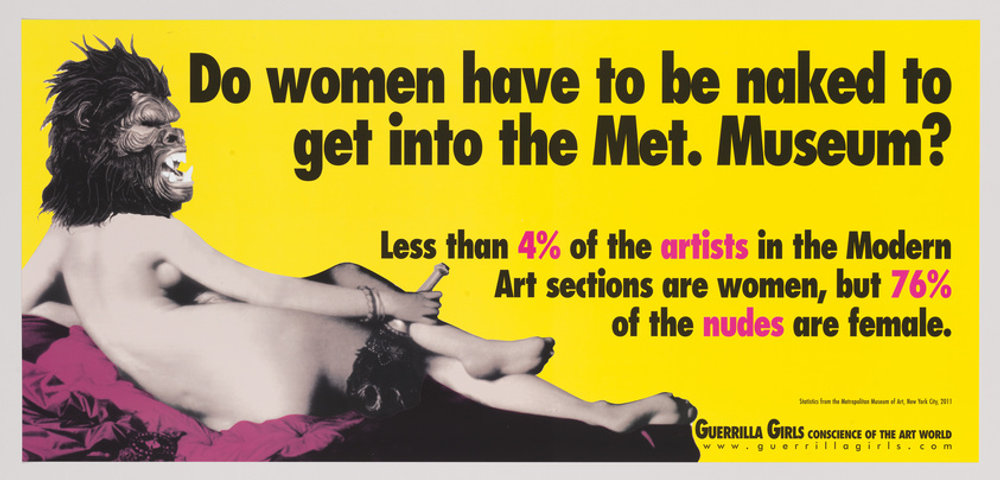In 1971, feminist art historian Linda Nochlin posed the rather provocative question, ‘Why Have There Been No Great Woman Artists?’. The term ‘Great’ is crucial in both the essay’s title and contents, as Nochlin was not outright denying the existence of women artists, but instead questioning why, in the history of art, women artists hadn’t been hailed as ‘Great’ in much the same way as their male counterparts. Throughout the essay, the term ‘Great’ slides into synonymity with ‘Genius’, which carries with it the implication that an artist possesses an innate, God-given talent that will make itself known to the world, regardless of the circumstances in which the artist is born.
Of course, the reality is not so simple. Nochlin de-mystifies the figure of the ‘Great Artist’ through an interrogation of the social and material conditions that inevitably allow the ‘Greats’ to become ‘Great’— the institutions, money and social capital that allow this supposedly divine ‘Genius’ to reveal itself:
‘The fault lies not in our stars... but in our institutions and our education’ (p.5)1
Whether you believe that the figure of ‘The Artist’ possesses an intrinsic kind of creative ‘Genius’ or not, such talent is stifled if said Artist is not given the materials and education necessary for it to bloom. Nochlin’s argument can, therefore, be boiled down to a simple ‘nature versus nurture’ question. After all, it is the cultural, social and material circumstances that have historically acted as a barrier to entry for women, queer BIPOC and working-class artists.
While it's been over fifty years since Nochlin’s famed essay entered the cultural zeitgeist, in 2025, it still feels as though one needs to be rich in both time and money to allow any kind of creative process to unfurl. If the ‘fault’ lies in our institutions, among other factors, what use is there in continuing to beg for an invitation in spaces that are built on legacies of exclusion? Even when “let in”, artists of marginalised identities can quickly become pigeonholed in their identity of “difference”, stifling their multiplicity and putting limitations on all they desire to express.
Ultimately, if we are not accepted by ‘Great’ institutions, we have no choice but to foster our own. Towards the end of the essay, Nochlin hints at this eventuality, illuminating how marginalised groups can actually gain an advantage by being in the position of the underdog. As outsiders, we can ‘reveal institutional and intellectual weaknesses’ and ‘take part in the creation of institutions’2 that strive for inclusivity, and shield artists from identity-based discrimination.
FLOS aims to counteract the inherent exclusivity of established art institutions based on gender, sexuality, race and class. Like many artists’ collectives that have preceded ours, we recognise the power of art as a vehicle for social change. In an effort to make the arts more accessible for both prospective audiences and artists themselves, we practice flexible ticket pricing for our events and free open calls for artist submissions. As well as reducing financial barriers to the arts, we’re steadily foregrounding a network of like minded artists and creators who can both relate to and rely on one another. We are able to actualise this ethos through grassroots funding, community investment and crowdfunding, which allows us to put on events and grow our collective.
Let us discover a sea of Great women artists, Great queer artists, Great BIPOC artists, and Great working-class artists. After all, those of us with double vision3 have twice as much to say.

References
1 Linda Nochlin, ‘Why Have There Been No Great Woman Artists?’ p.5
2 Linda Nochlin, ‘Why Have There Been No Great Woman Artists?’ p.24
3 W.E.B. DuBois, ‘The Souls of Black Folk’, 1903.
Blog written by Cicely Kirby-Smith - Cicely is a freelance arts and culture writer based in Bristol - Instagram @cisskirbyysmith





